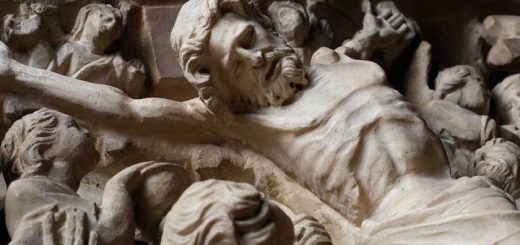Why is Saint Sebastian a gay icon?
 Text taken from the blog Queer Saints and Martyrs and Others (England), 20 January 2012, freely translated by Adriano C.
Text taken from the blog Queer Saints and Martyrs and Others (England), 20 January 2012, freely translated by Adriano C.
Writing about St. Joan of Arc recently I noted that she holds particular importance for us gay, lesbian and transgender men in the church, as her martyrdom at the hands of church authorities can be seen as a powerful metaphor for the persecution we receive from some members of the church, precisely for being honest with ourselves, for refusing to give up the identity given to us by God.
I've thought about this for a while, and in fact all Christian martyrs could similarly rise to a similar role model (even if the other martyrologies did not necessarily come about at the hands of the church). One martyr, in particular, has been strongly identified as a gay male icon, St. Sebastian.
Strictly speaking, this is somewhat inappropriate, given that there is nothing about Sebastiano and his husband that is particularly gay. The main reason frankly is that painters for centuries have made suggestive images of his martyrdom, painting him half naked, portraying him as a desirable young man pierced by arrows: soft porn disguised as the inspiration of religious art. (The newspaper “The Independent” did an excellent analysis, still available online, on how this association of ideas developed through various works of art).
 Now, I have no problem with gay men enjoying images of St. Sebastian, but I do think there is some problem with seeing him as a specifically gay saint.
Now, I have no problem with gay men enjoying images of St. Sebastian, but I do think there is some problem with seeing him as a specifically gay saint.
However, I came across a particular painting, very different from the original one, which immediately reminded me of a concept I had written some time ago about a possible model for us in dealing with our relationship with the church. This is the drawing. This is what I wrote earlier this year talking about his death:
“After his execution was ordered, he was tied naked to a pillar and shot with arrows. Widely represented in art, this was not what killed him, however. He was presumed dead, but was later nursed back to life. After his recovery, he again accused the Emperor of cruelty towards Christians. Enraged, the Emperor once again ordered his execution.
This time he was beaten to death, on January 20, 288." How many others have achieved a double martyrdom in their lives?
The image shows Sebastian pierced by arrows but "not yet dead", while facing the Emperor Maximian, after the execution of the first attempt at martyrdom. So what's the connection? Let's recall Michael B Kelly's concept of Return walk from Emmaus, that is, the idea that lesbian, gay and trans (LGT) people in the Catholic Church have a need, and also an obligation, to move away from the church and then return to it, to confront ecclesiastical institutional leaders about the reality of the Lord Risen and his true message to the world. When I saw this image, I suddenly wanted to read it as representing all queer people confronting the emperors of the church over the evidence of their attempted martyrdom.
Through the misrepresentation of Scripture, the characterization of us as “severely” disordered people, the active opposition in the political sphere of equal civil rights, and the inability to oppose criminalization and therefore tacit consent towards bullying, violence and murder (not to mention the actual executions of victims at the stake in the early years), despite all the efforts of the ecclesiastical mechanism, we too, are not yet dead.
 Following Sebastiano's example, the challenge we face is that we must strive to do more and not simply wallow in our pain, merely being content with having survived. We too must return to the church, showing our pain with evidence and therefore attempting a process of reconciliation.
Following Sebastiano's example, the challenge we face is that we must strive to do more and not simply wallow in our pain, merely being content with having survived. We too must return to the church, showing our pain with evidence and therefore attempting a process of reconciliation.
To see some of Sebastiano's extraordinary representations in art, you can see the results of a Google image search, or go to “Iconography of Saint Sebastian”, which has a large collection of art links and images, helpfully organized chronologically and by artist. I particularly like some of the images of 20th century artists, which seem to move beyond woozy sentimentality towards something real and relevant.
This is amazing, Sebastiano as a self-portrait of a female artist, Gel Erwin. And why not?
Original text: St. Sebastian, Martyr






